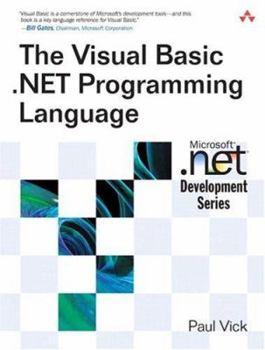The Visual Basic .Net Programming Language
Praise for "The Visual Basic .NET Programming Language"There is no substitute to getting the inside scoop directly from a book written by the father of a programming language such as Bjarne Stroustrup... This description may be from another edition of this product.
Format:Paperback
Language:English
ISBN:0321169514
ISBN13:9780321169518
Release Date:January 2004
Publisher:Addison-Wesley Professional
Length:407 Pages
Weight:0.10 lbs.
Dimensions:0.7" x 7.0" x 9.3"













